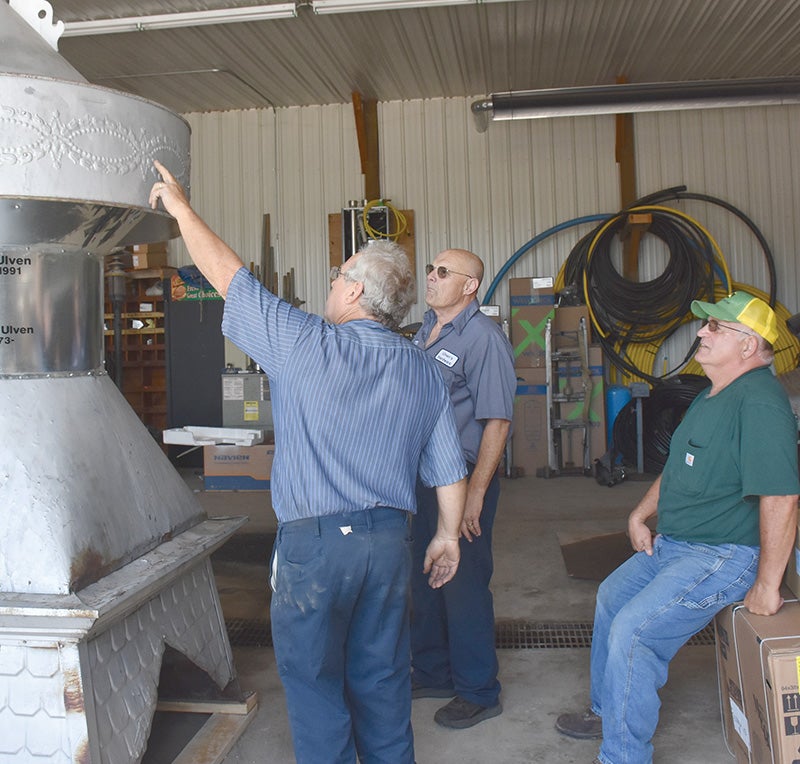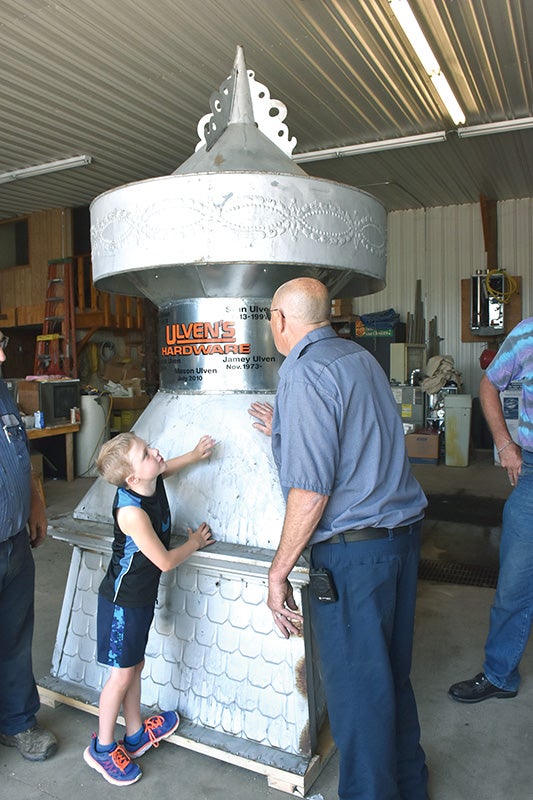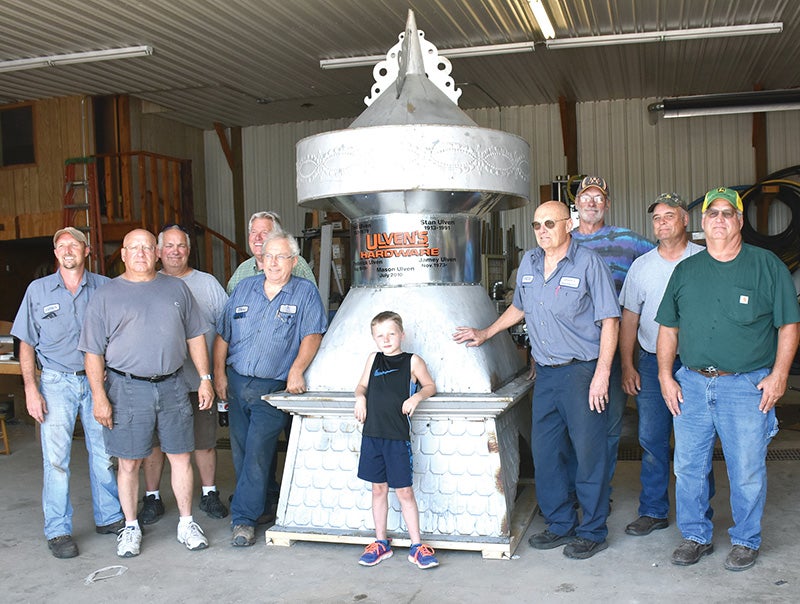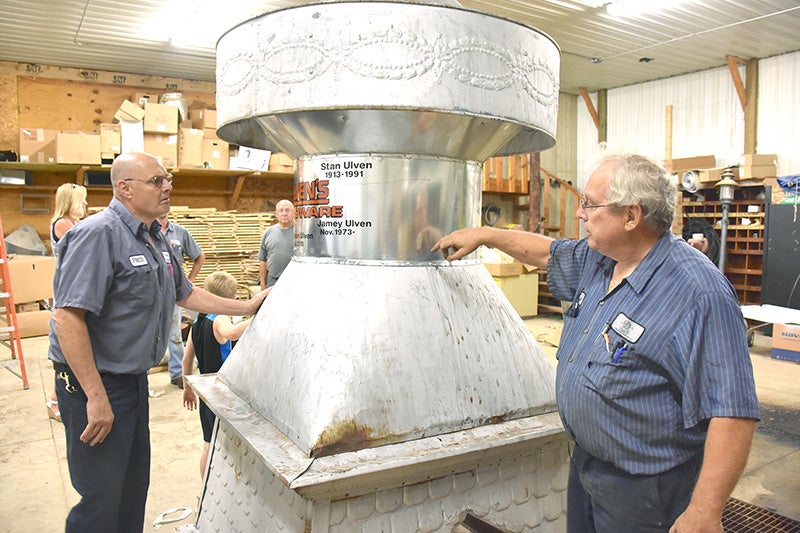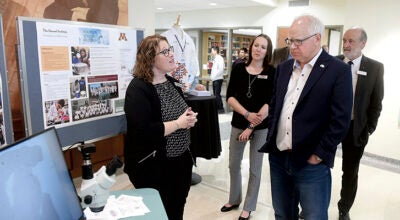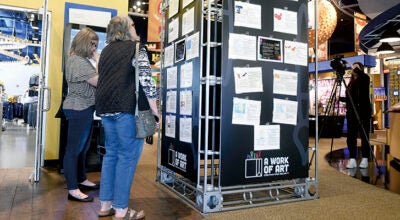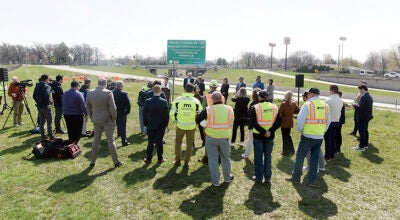Grandpa’s cupola; RC store owner surprised with rare gift
Published 8:04 am Saturday, July 8, 2017
ROSE CREEK — Rose Creek hardware store owner Fred Ulven knew his grandfather — also named Fred — was in the cupola-making business.
There was a large one that sat atop a local barn near Rose Creek that he was pretty sure his grandfather either sold or made, decades ago.
Cupolas, also called ventilators, were used to increase air flow in barns. They also often held lightning rods.
The elder Fred, who died in 1979, founded the hardware which today has seen four generations of Ulvens. His son, Stan, died some years ago. His son, the younger Fred, took over and today, his son, Jamey, is also part of the business.
So, when Fred’s business neighbor and friend, Dave Whalen of Dave’s Plumbing, Heating and Refrigeration, heard Fred talk about his granddad, he knew he wanted to retrieve that piece of vintage tin from the roof of the old barn. He got the chance a few years ago when the barn’s owners, Bruce, Dave and Craig Nelsen, decided to tear down the old structure. Whalen was there to haul the cupola away, with the Nelsens’ blessing. Whalen was intent on restoring the piece, which was in four pieces. Bob Lowe, who owns Lowe’s Heating and Air Conditioning in Brownsdale, worked with Whalen on the project.
They kept the work from their friend Ulven, however. The plan was to restore the cupola — a monster, at 10 feet tall and 5 feet wide — and give it to him in time for Rose Creek’s 150th celebration.
“We worked on it for about four months, I suppose,” said Whalen, who kept the pieces hidden in his shop. The midsection of the cupola was in the worst shape, and had to be replaced. That gave the pair a chance to personalize the structure for Ulven, by installing a sign that wrapped around the middle, inscribed with a listing of all the Ulven Hardware owners or family.
Ulven was asked to come to Whalen’s garage Wednesday, where family, the Nelsen brothers and others gathered to watch the unveiling.
When Ulven first saw the item, he was silent but smiled. He looked at it up and down, and around. And kept grinning, finally he said, “Amazing.”
He checked out the newly-replaced midsection, and areas that had been straightened or tightened. The men chuckled over the holes made by bullets and bird shot, often caught by rural cupolas. They also marveled over how the giant ventilator ever got hoisted to a barn roof in the first place.
“Block and tackle and horses, I would guess,” said Whalen.
Whalen said he had to use epoxy to reattach a part of the cupola’s cap.
“I had to come to the hardware for that,” he said with a chuckle, noting that Ulven sold it to him without knowing what it was for.
Ulven said his shop still had old patterns that were once used for tin work, including cupolas. Whether or not he had a pattern for this one was unknown.
“I know my grandfather made cupolas; they called him a master tinnersman,” he said. “He would make stovepipes, too; anything you needed in tin.”
No one knew, exactly, who first owned the barn, or whether the cupola was placed right away. More importantly, no one knows for sure Ulven’s grandfather was the original maker. Whalen found a tag on the inside the cupola with grease-pencil markings, but the writing was so deteriorated it couldn’t be read.
“Yep, that’s what he used,” Ulven said, referring to the grease pencil.
The lack of positive verification probably doesn’t matter. It seemed fitting that the Ulvens should have it, regardless. Jamey’s son Mason, just a youngster, had an avid interest in the structure, too. The history continues.
The family planned to put it in the Rose Creek 150th parade this weekend.
After that, Ulven wasn’t sure exactly where the cupola should go.
“I don’t know,” joked Whalen. “Why don’t you put it on a barn?”


